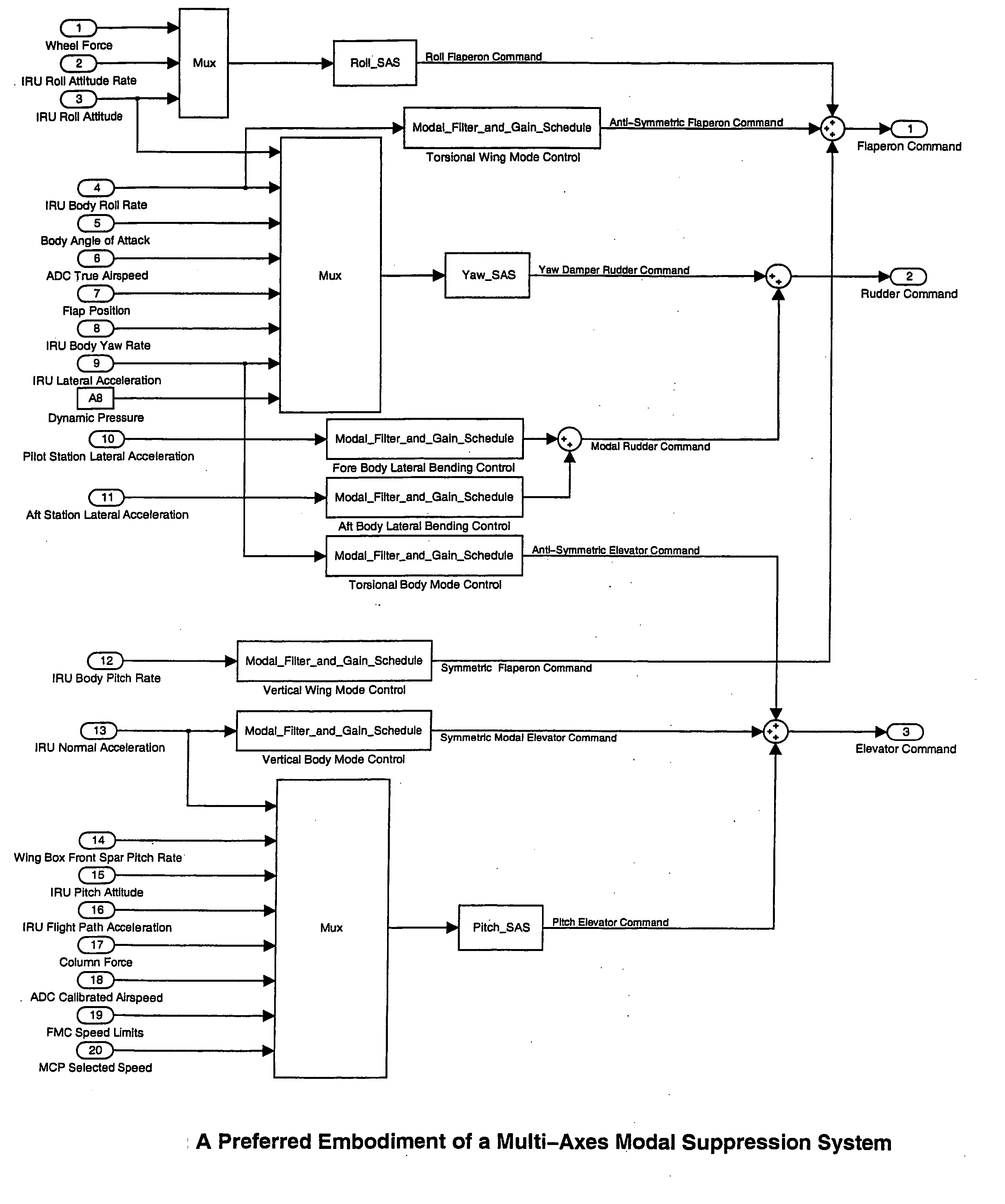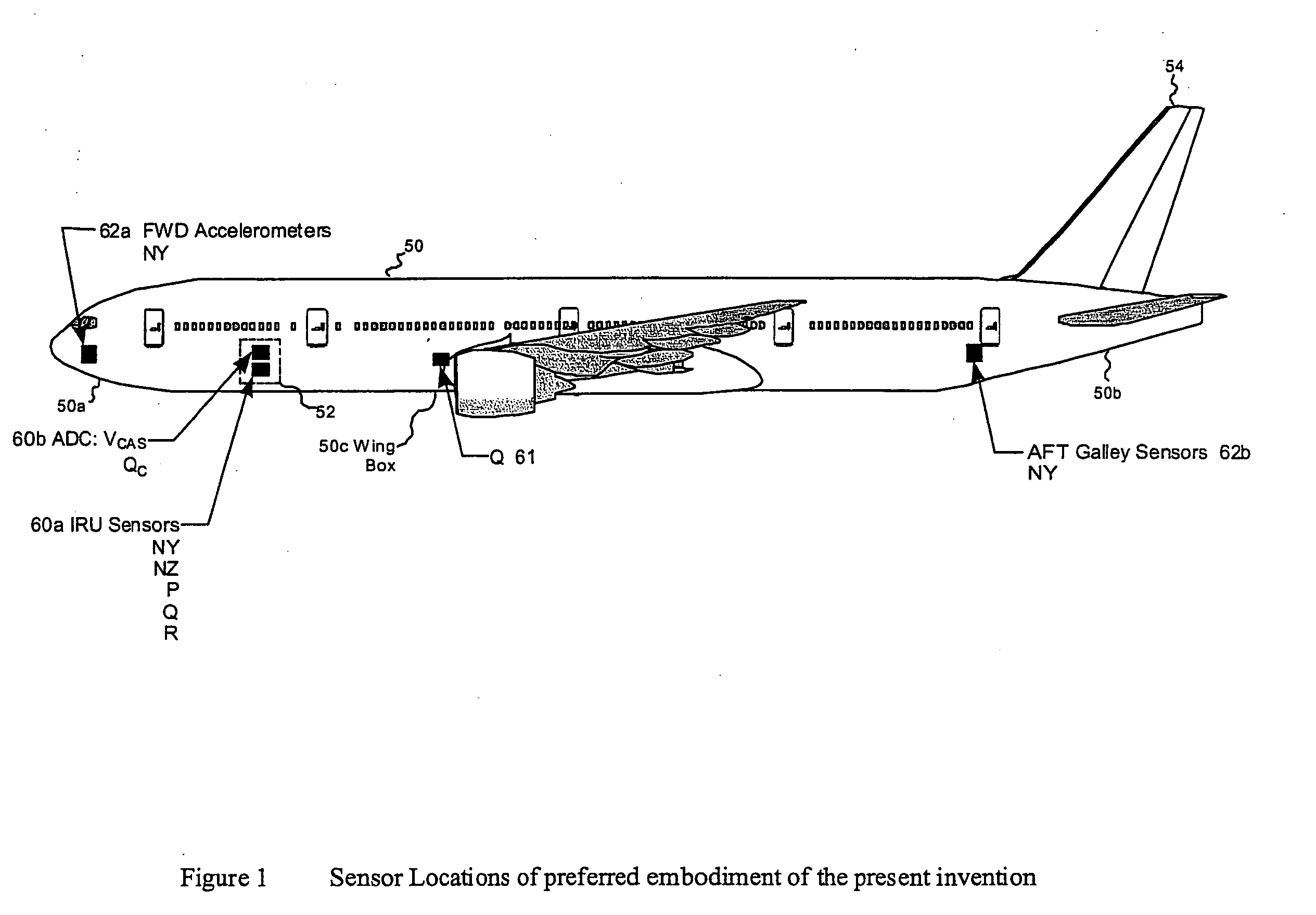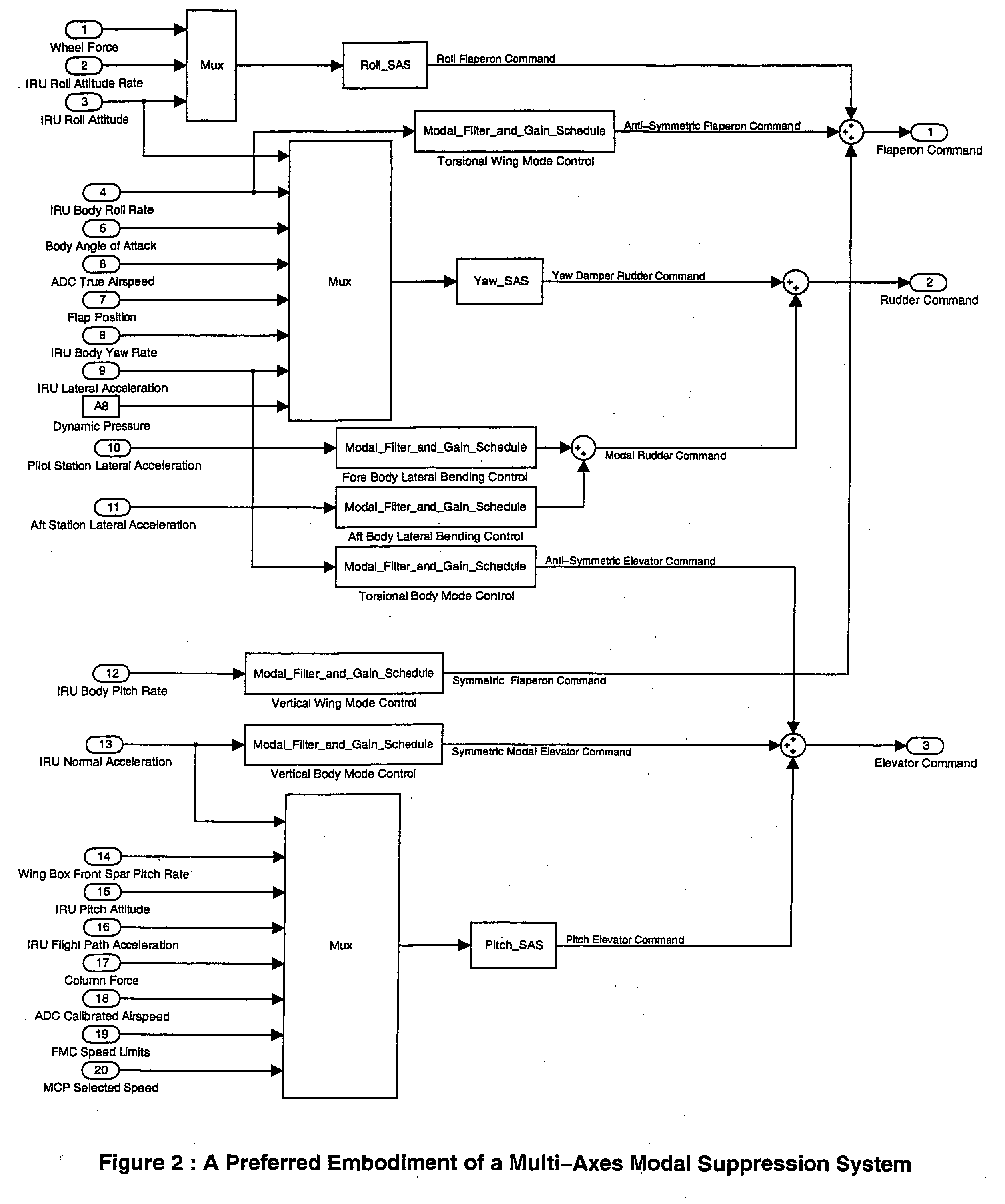Aircraft multi-axis modal suppression system
a multi-axis, suppression system technology, applied in the field of aircraft flight control art, can solve the problems of pilots performing unnecessary corrective actions, passengers and crew riding discomfort or increase in structural load, and pilots performing vibration misjudgment, etc., to achieve accurate sensing of modal induced oscillations
- Summary
- Abstract
- Description
- Claims
- Application Information
AI Technical Summary
Benefits of technology
Problems solved by technology
Method used
Image
Examples
Embodiment Construction
[0052]FIG. 1 illustrates the side view of a conventional commercial aircraft. The problem exhibited by such aircraft to which the present invention is addressed is that the flexible structure is subject to vibrations resulting from external forces, such as gusts or pilot control inputs, exciting natural resonant modes of the body. Of particular concern due to passenger discomfort are the body bending vibrations and body twisting torsional modes.
[0053] The present invention is an active system for suppressing the body bending modes and the torsional modes.
[0054]FIG. 1 depicts the sensors required to feed into the control law algorithm of the preferred embodiment of the multi-axis modal suppression system as shown in FIGS. 2, 2a, 2b &2c. The feedback sensors include an inertial reference unit 60a (hereinafter IRU) located at the Electronics Equipment (hereinafter EE) Bay 52 at the front belly of the aircraft 50; along with the IRU 60a, an air data computer 60b (hereinafter ADC) is a...
PUM
 Login to View More
Login to View More Abstract
Description
Claims
Application Information
 Login to View More
Login to View More - R&D
- Intellectual Property
- Life Sciences
- Materials
- Tech Scout
- Unparalleled Data Quality
- Higher Quality Content
- 60% Fewer Hallucinations
Browse by: Latest US Patents, China's latest patents, Technical Efficacy Thesaurus, Application Domain, Technology Topic, Popular Technical Reports.
© 2025 PatSnap. All rights reserved.Legal|Privacy policy|Modern Slavery Act Transparency Statement|Sitemap|About US| Contact US: help@patsnap.com



